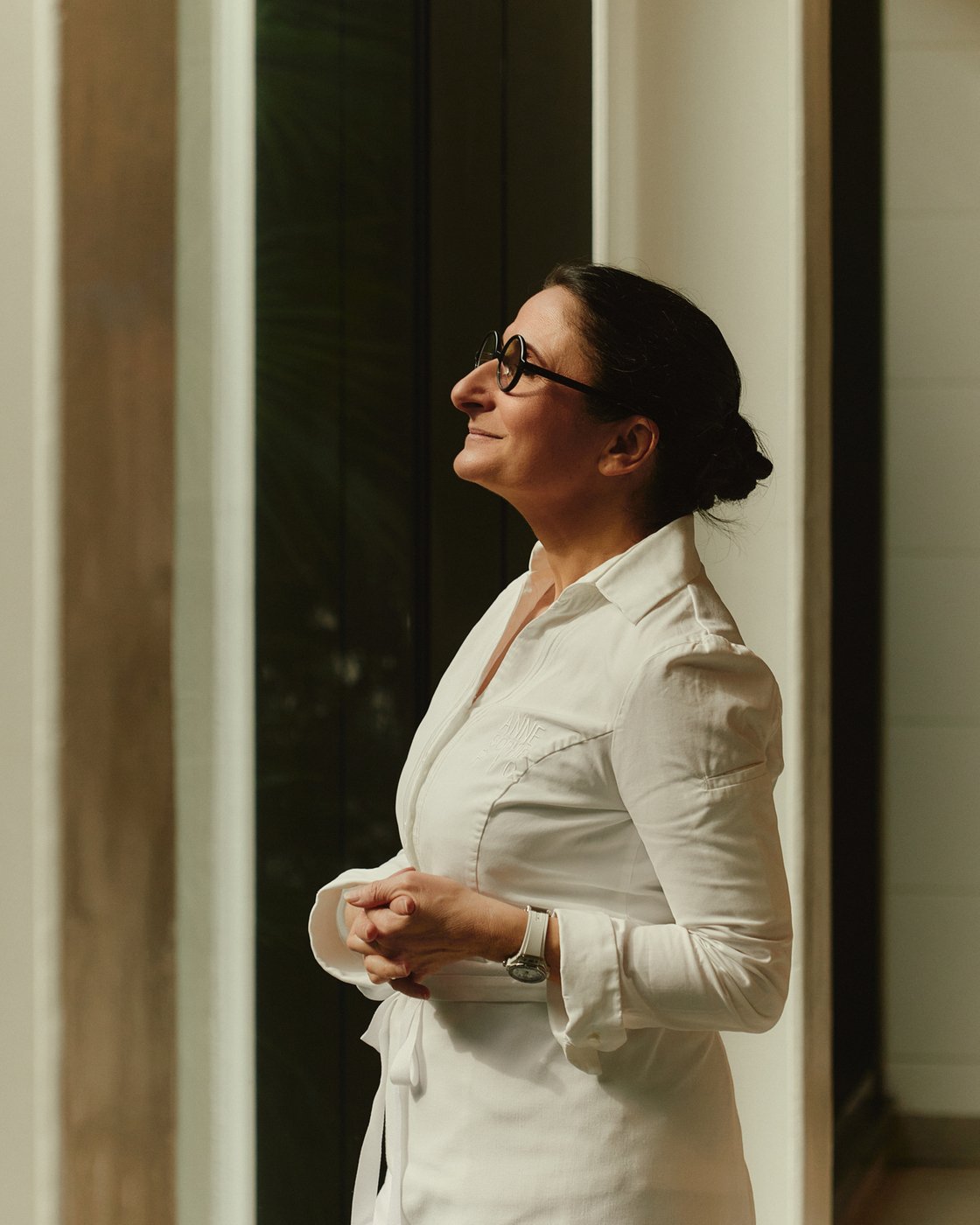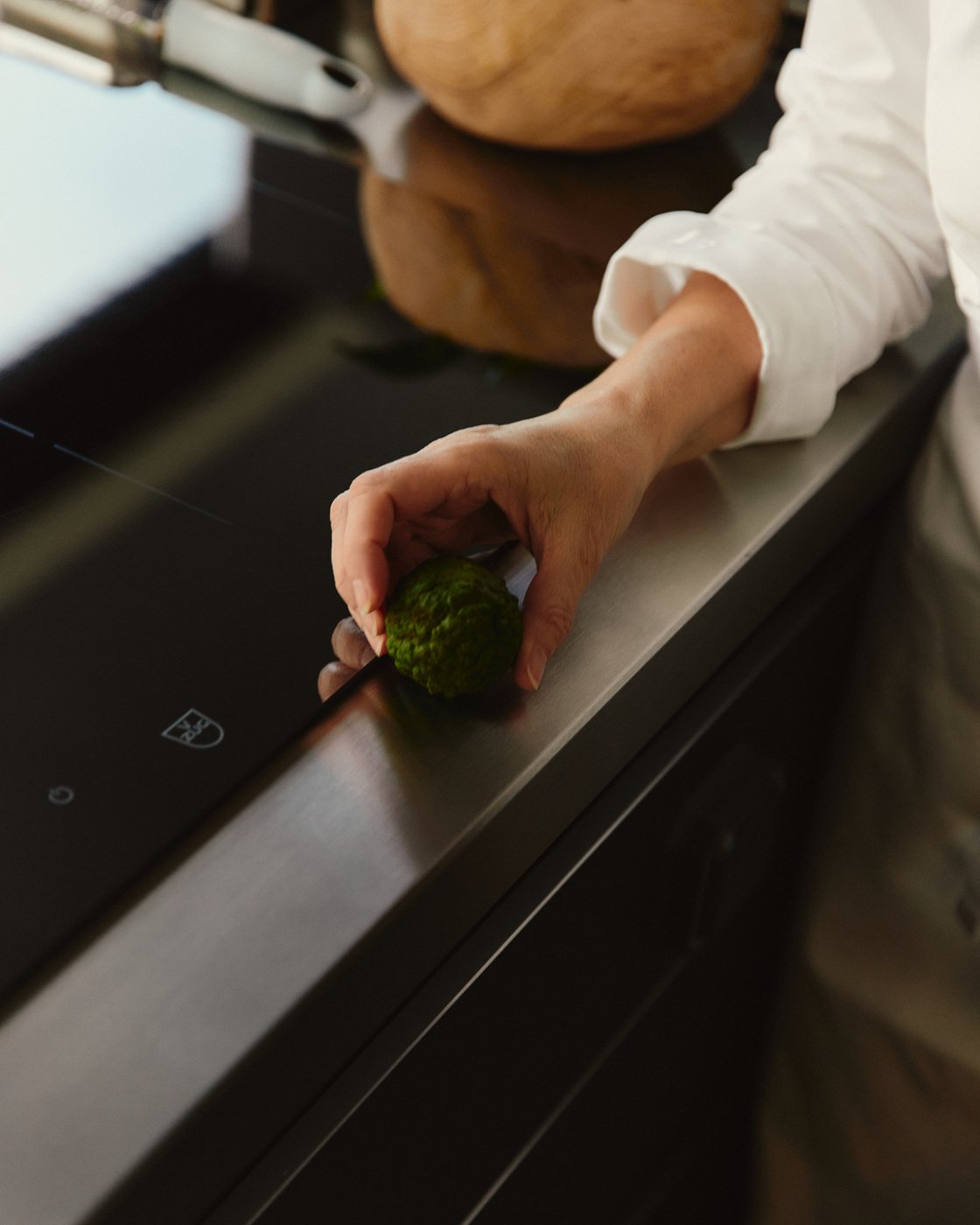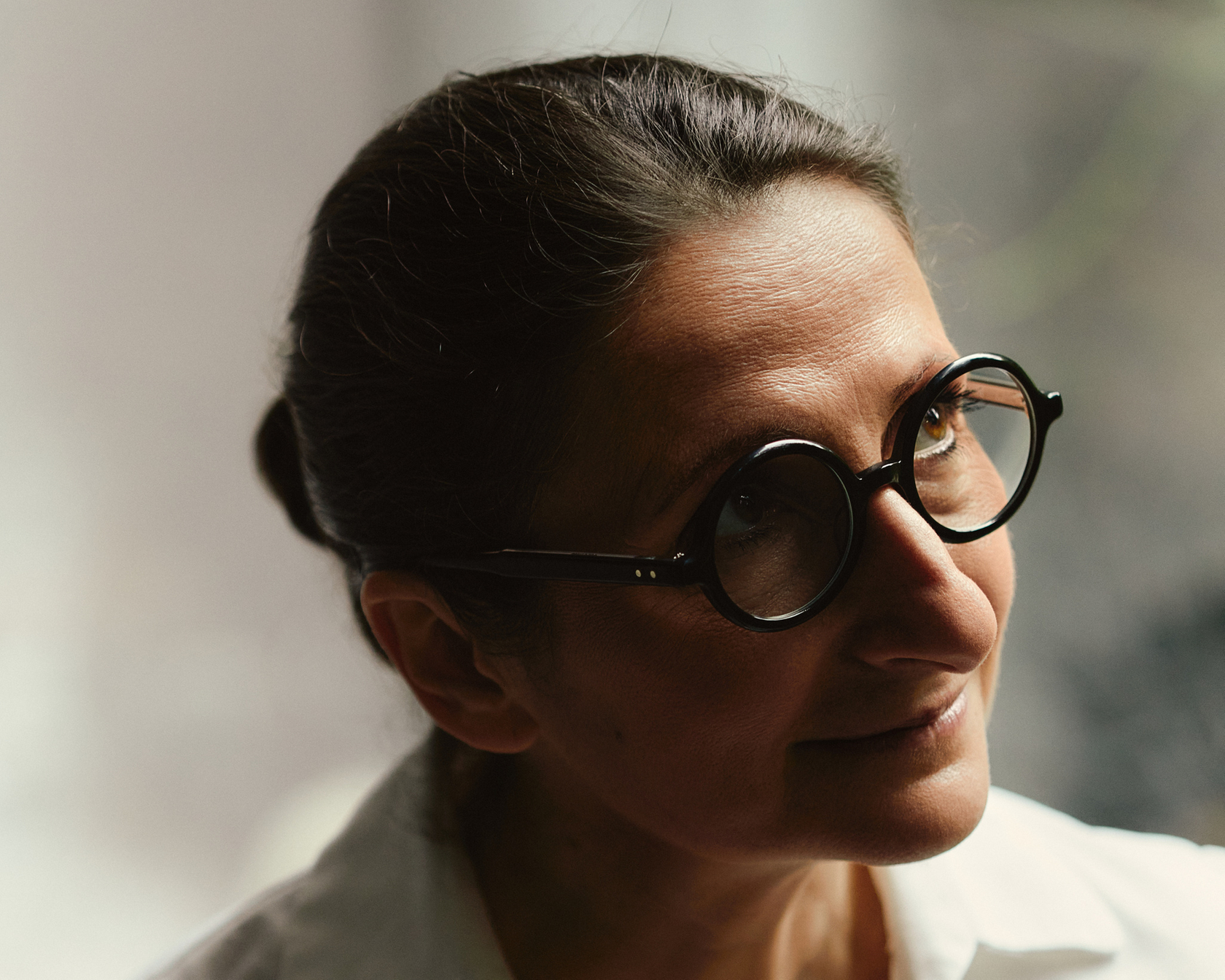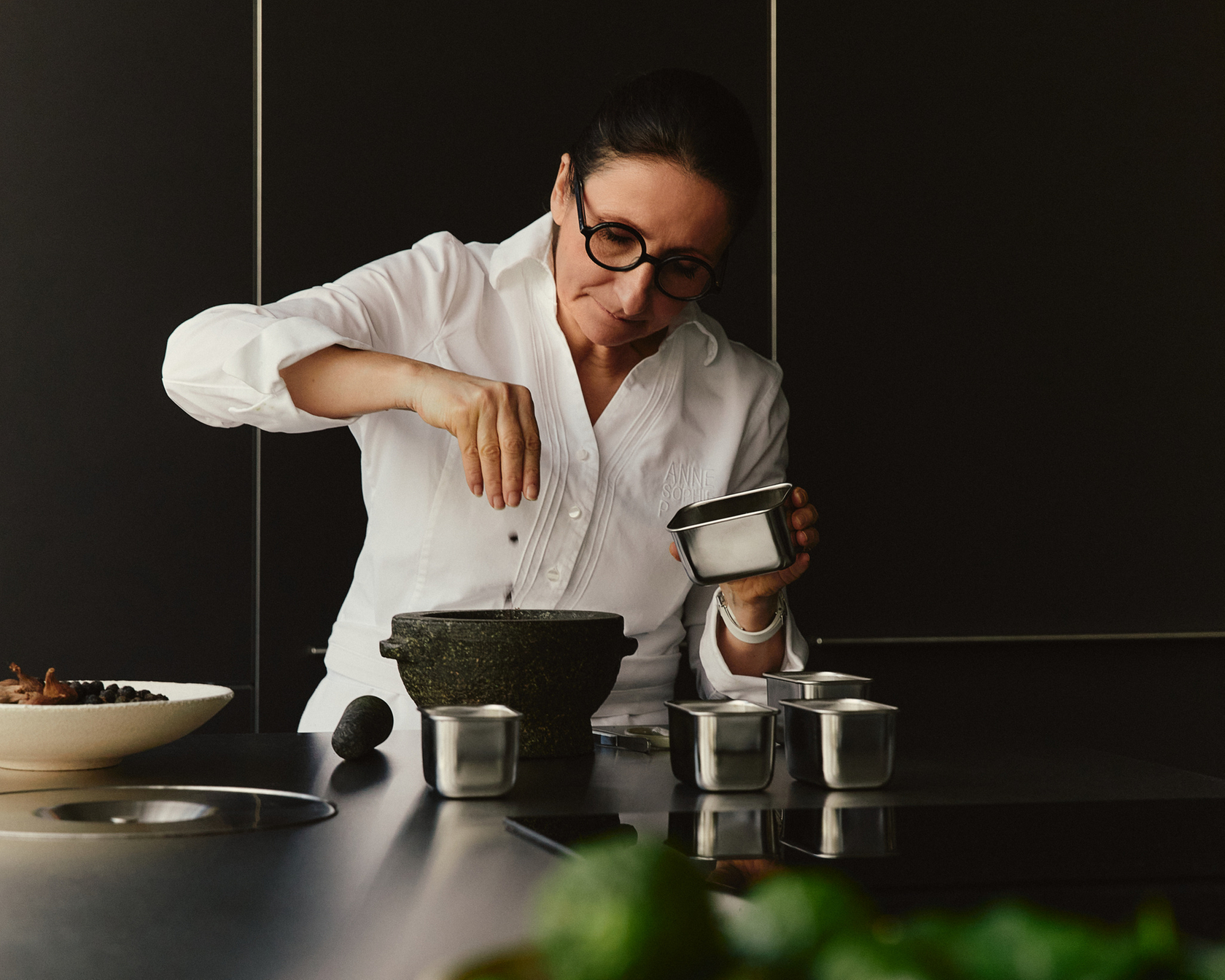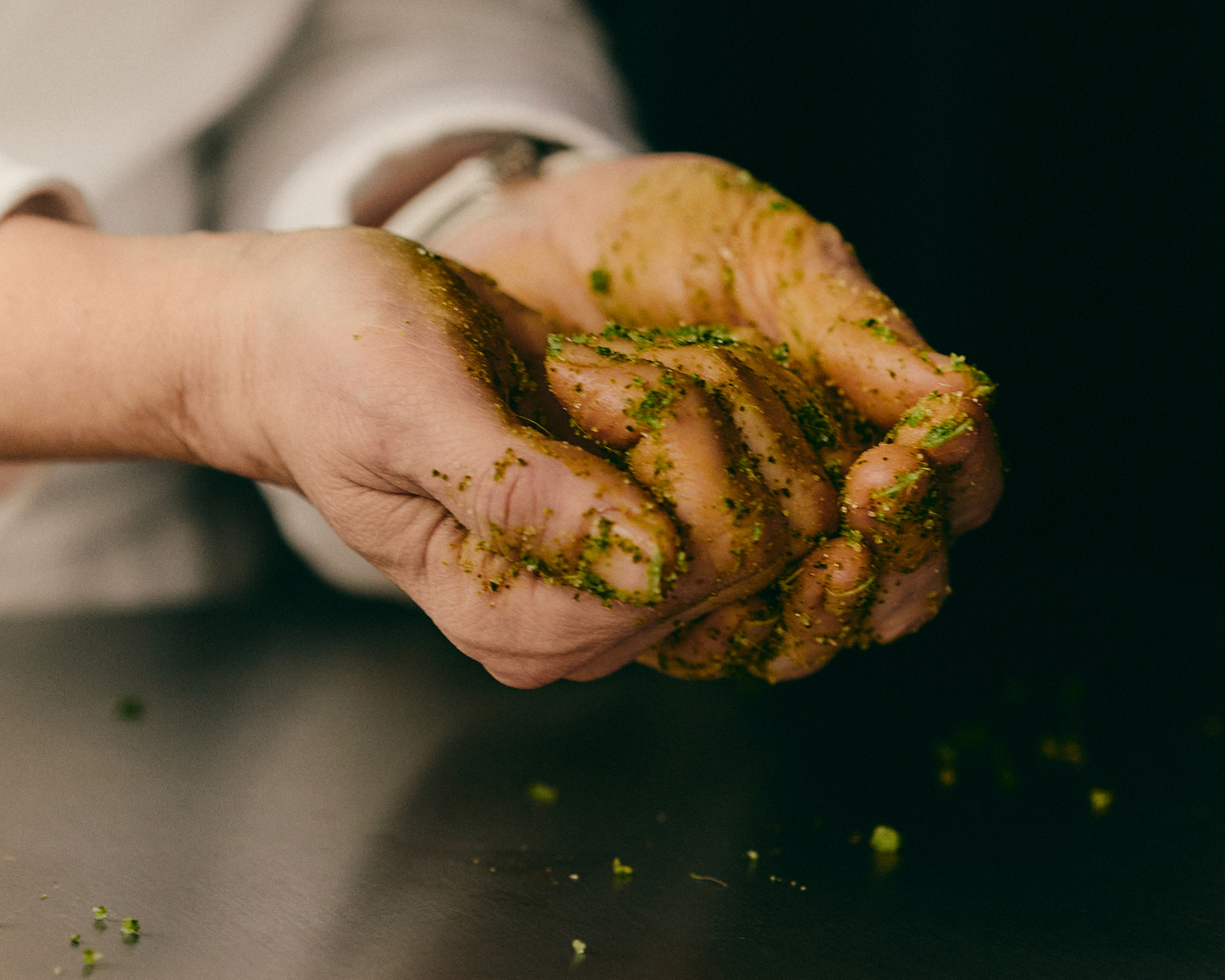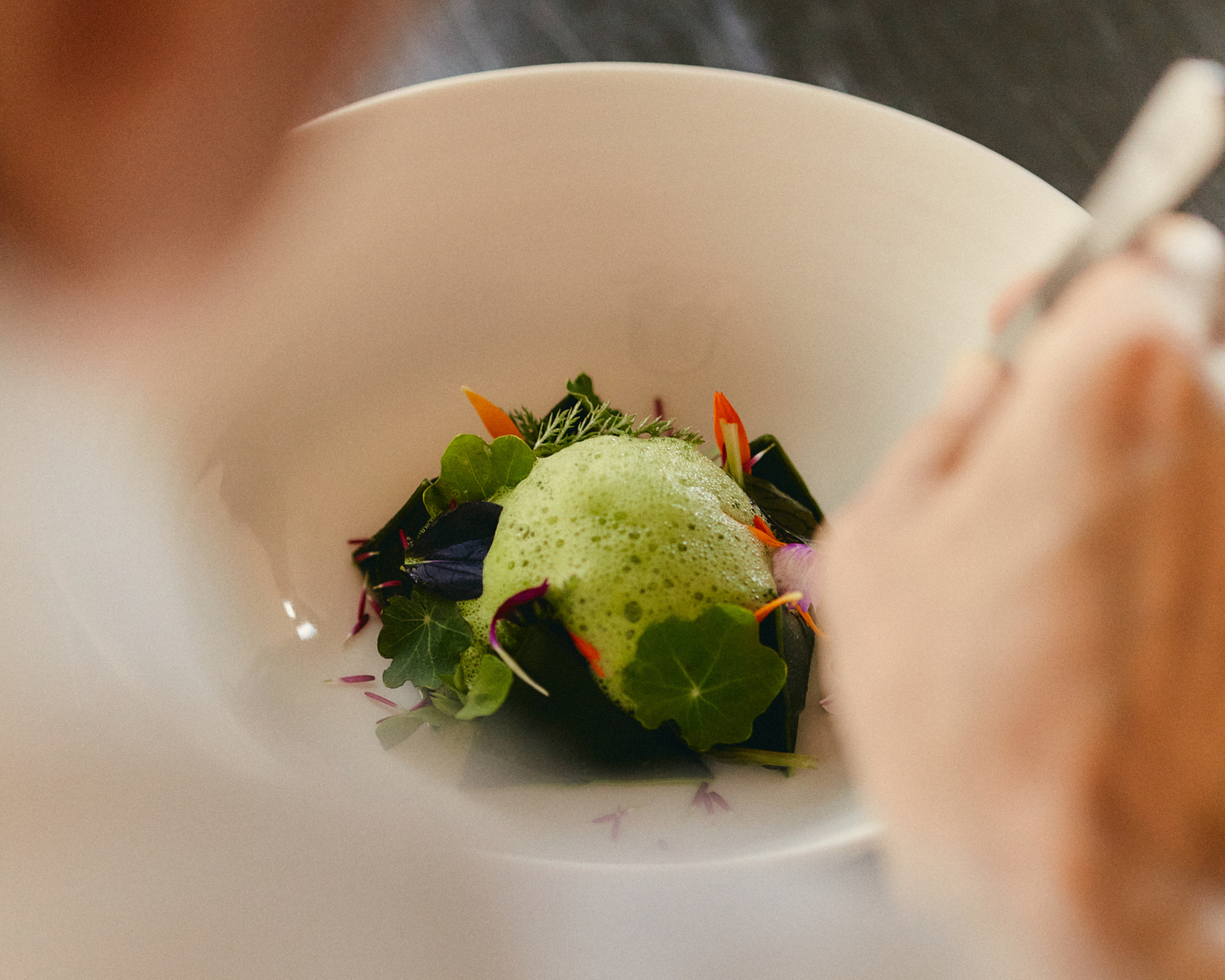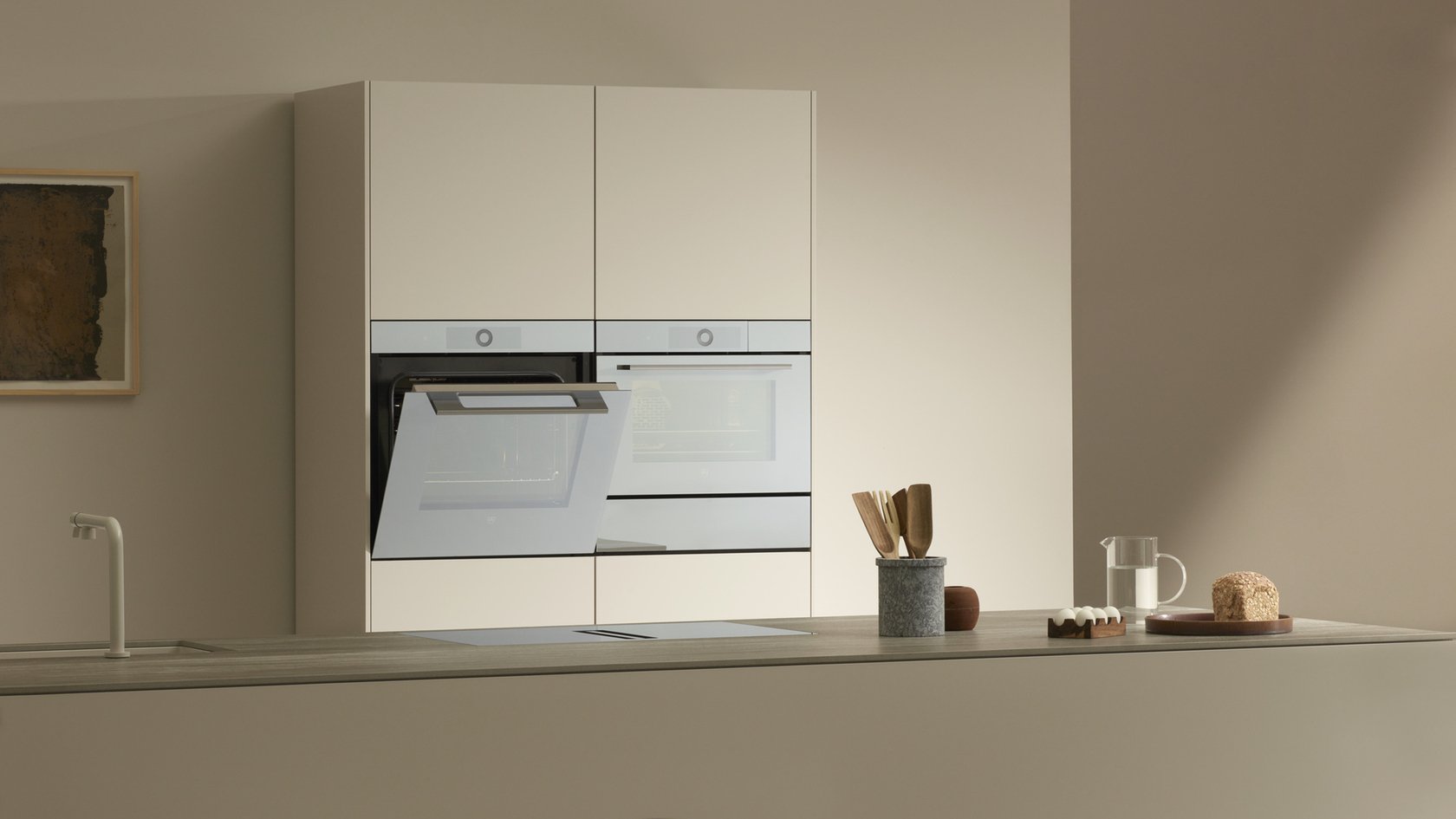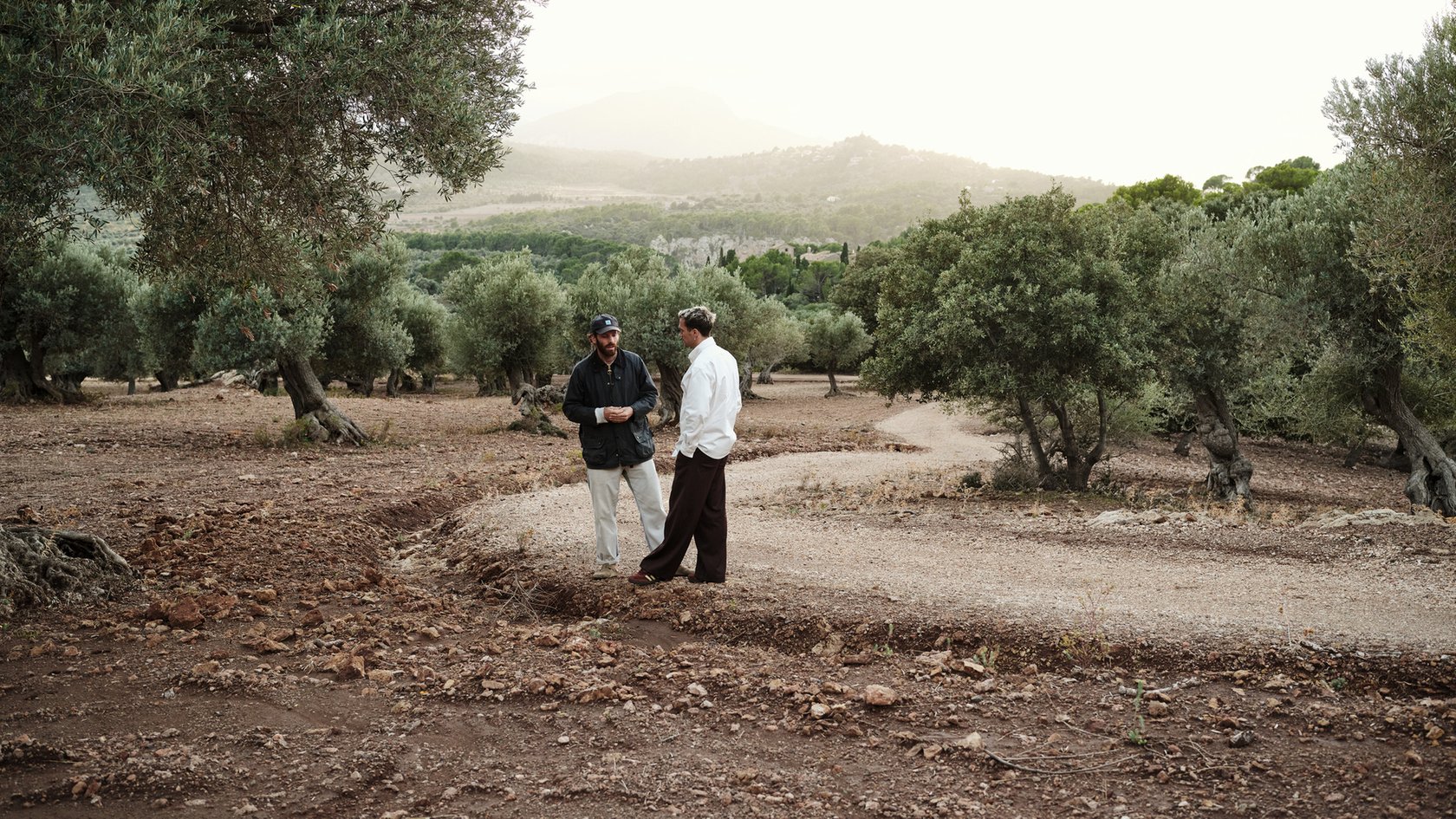There’s a lot of green in your cooking. Why is that?
This is a good question. The main reason is that it’s such a pleasure to rediscover this colour every springtime, after missing it through the winter months. For me, the colour green is the spirit of a dish – it can be the only colour on the plate. It represents leaves, and life itself. It’s very much linked to a flavour: herbaceous but cheerful, regenerating.
Could you describe the composition of your dishes in terms of their colours, but also in terms of their textures?
There are several possible approaches, but for me the main thing that gives the dish its raison d’être is the aromatic framework. That creates the story between the ingredients. Then there is the texture, namely how the elements – the ingredients – interact with each other. The cooking also adds something, and finally the presentation gives the dish its character. All of these elements together make the taste and – I hope, we always hope – convey an emotion.
Could you illustrate this reflective process for a dish that is currently on one of your menus?
Perhaps I can talk about one of our signature dishes, the Berlingots, which is exemplary of my cuisine today. I call it ‘Verdeur fondante’ (‘melting greenness’) – my dishes often have a name that sounds like a haiku dedicated to them. It was conceived as a challenge: I wanted to create a cheese-based dumpling in a shape that was a little different from those that I knew or that existed at that time. I was fascinated by the Berlingots, which are sweets from the city of Carpentras in France. And so that dish was born, almost intuitively.

